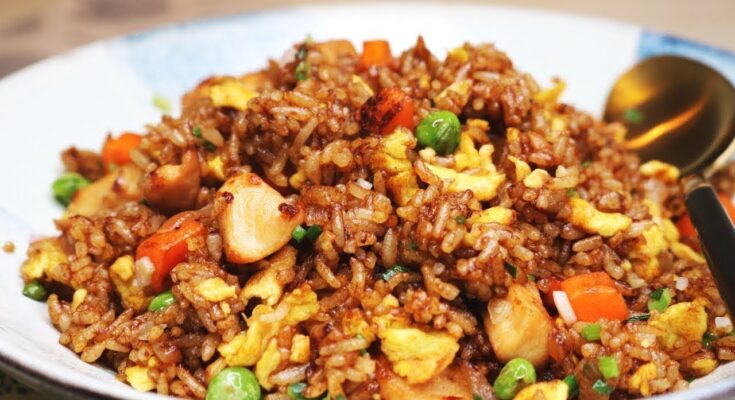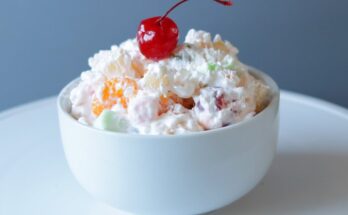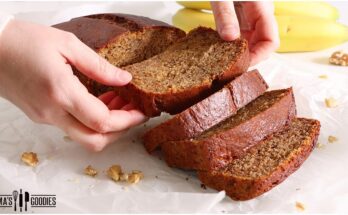Best Fried Rice Recipe: Fried rice is a beloved dish enjoyed across the globe. Its beauty lies in its simplicity and versatility—you can make it with just a few pantry ingredients or get creative with various add-ins like vegetables, proteins, and spices.
Whether it’s a quick lunch or a filling dinner, fried rice has earned a special spot in many cuisines. Let’s walk through a foolproof recipe step-by-step to ensure you get a restaurant-quality dish every time!
Ingredients List
Essential Ingredients
- 3 cups of day-old cooked rice (preferably jasmine or long-grain)
- 2 tablespoons of cooking oil (vegetable or sesame oil)
- 2 eggs
- 1 cup mixed vegetables (peas, carrots, bell peppers, etc.)
- ½ cup diced protein (chicken, shrimp, or tofu)
- 3 tablespoons soy sauce
- 2 teaspoons oyster sauce (optional)
- 2 green onions, chopped
Optional Ingredients for Variety
- Minced garlic and ginger for added flavor
- 1 teaspoon chili paste or flakes for heat
- Pineapple chunks for sweetness
- Additional sauces like hoisin or fish sauce
Substitutes for Dietary Preferences
- Tamari or coconut aminos for gluten-free options
- Brown rice or cauliflower rice for healthier alternatives
- Plant-based proteins like tofu for vegetarians
Types of Fried Rice
Explore the variety of fried rice types to find your favorite!
- Vegetable Fried Rice: A classic vegetarian option packed with vibrant veggies.
- Chicken Fried Rice: A protein-rich meal with tender chicken pieces.
- Shrimp Fried Rice: A seafood twist with succulent shrimp.
- Special Fried Rice: Mix proteins like chicken, shrimp, and ham for a deluxe version.
How to Make Fried Rice – Step by Step Guide
Step 1: Preparing the Rice
The key to great fried rice starts with the rice itself. Day-old rice works best because it’s dry and less likely to turn mushy during stir-frying. If you don’t have leftover rice, you can cook fresh rice and spread it on a tray to cool in the refrigerator for a few hours. Make sure the grains are fully separated for the perfect texture.
Step 2: Preparing the Ingredients
Having all your ingredients prepped and ready is crucial since stir-frying happens quickly.
- Vegetables: Chop your vegetables into small, uniform pieces for even cooking.
- Proteins: If using chicken or shrimp, season and marinate them for extra flavor. Pre-cook larger pieces if necessary.
- Eggs: Beat the eggs in a separate bowl to make scrambling easier.
Step 3: Heating the Wok or Pan
A hot pan is essential to achieving that iconic smoky, slightly charred flavor known as “wok hei.” If you don’t have a wok, use a large, heavy-bottomed pan. Heat it over medium-high to high heat and add your oil once the pan is hot. Swirl the oil to coat the surface evenly.
Step 4: Cooking the Eggs
Once your pan is hot and the oil is shimmering, pour in the beaten eggs. Let them set for a few seconds, then scramble them gently. Once they’re cooked but still soft, push them to one side of the pan.
Step 5: Stir-Frying the Ingredients
Now it’s time to build your flavors! Add your diced vegetables and protein to the pan. Stir-fry them over high heat for about 2-3 minutes until the vegetables are tender-crisp and the protein is cooked through.
Step 6: Adding Rice to the Pan
Break up any clumps of rice with your hands before adding it to the pan. Spread it out evenly and stir-fry for several minutes. The key is to keep the rice moving so it doesn’t stick. Toss the rice with the scrambled eggs, vegetables, and protein until everything is well combined.
Step 7: Seasoning the Fried Rice
Add your soy sauce, oyster sauce, and any other desired seasonings. Pour the sauces around the edges of the pan rather than directly onto the rice to allow them to caramelize slightly. Stir-fry the rice for another 2-3 minutes, tasting as you go to ensure a balanced flavor.
Step 8: Final Stir-Fry
Give the rice one last toss to ensure all ingredients are evenly coated. You’ll know it’s ready when the rice has a slight sheen, the grains are separate, and the aroma fills the room.
Step 9: Garnishing and Serving
Transfer the fried rice to a serving dish and garnish with chopped green onions or sesame seeds. Serve it hot with a side of cucumber salad, dumplings, or spring rolls.
Common Mistakes to Avoid
- Overcrowding the pan, which can lead to steaming instead of frying
- Using freshly cooked rice without cooling it
- Adding too much sauce, making the rice soggy
Tips for Perfect Fried Rice Every Time
- Use cold, day-old rice for the best texture
- Keep your ingredients moving constantly in the pan
- Adjust seasoning according to your taste
Popular Fried Rice Variations
- Thai Pineapple Fried Rice: Sweet and savory, with chunks of pineapple and cashews
- Indonesian Nasi Goreng: A spicy version with sambal and kecap manis
- Chinese Yangzhou Fried Rice: Featuring shrimp, ham, and a variety of vegetables
Healthier Fried Rice Options
- Swap white rice for brown rice or cauliflower rice
- Reduce oil and use lean proteins like chicken breast or tofu
- Load up on vegetables to increase fiber content
Storage and Reheating Tips
- Store fried rice in an airtight container in the refrigerator for up to 3 days
- Reheat in a pan with a little oil to restore texture
- Avoid microwaving, as it can make the rice mushy
FAQs about Best Fried Rice Recipe
1. What type of rice is best for making fried rice?
The best rice for making fried rice is day-old, medium-grain or long-grain white rice. It’s less sticky and more firm, making it ideal for achieving the perfect texture. Jasmine and Basmati are popular choices.
2. Should I cook the rice specifically for fried rice?
It’s recommended to use rice that has been cooked and then chilled for at least 8 hours, or overnight. This helps to dry out the grains which prevents the fried rice from becoming soggy.
3. What are the essential ingredients for classic fried rice?
Essential ingredients for classic fried rice include cooked rice, eggs, vegetables (like peas, carrots, and onions), soy sauce, and a protein source such as chicken, shrimp, or tofu.
4. How do I prevent my fried rice from sticking to the pan?
Use a wok or a large, non-stick skillet and ensure it is very hot before adding ingredients. Use enough oil, and don’t stir the rice too often. Let it sit for a bit so that it can develop a slight crust.
5. Can I add different vegetables to my fried rice?
Absolutely! Fried rice is versatile. Feel free to add a variety of vegetables such as bell peppers, broccoli, and mushrooms to enhance the flavor and nutritional value.
6. Is fried rice healthy?
Fried rice can be part of a balanced diet when made with a variety of vegetables and lean proteins. Use low-sodium soy sauce and limit the oil to keep it healthier.
7. How long can I store leftover fried rice?
Leftover fried rice can be stored in an airtight container in the refrigerator for up to 5 days. Make sure it is cooled completely before storing to avoid bacterial growth.
8. Can fried rice be frozen?
Yes, fried rice freezes well for up to 3 months. Store it in airtight containers or freezer bags. Thaw in the refrigerator overnight before reheating.
9. What is the best way to reheat fried rice?
The best way to reheat fried rice is on the stove over medium heat. Add a little water or additional soy sauce to prevent the rice from drying out. Stir frequently until heated through.
Conclusion
Making fried rice at home is easy, fun, and customizable. By following these steps, you can achieve a delicious, restaurant-quality dish every time. Experiment with different ingredients and flavors to keep things exciting!



